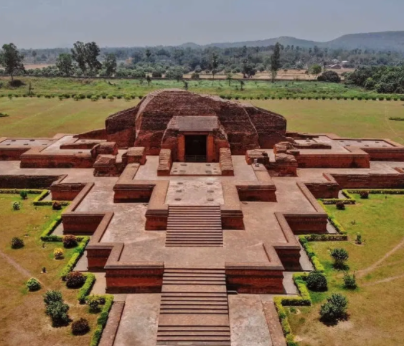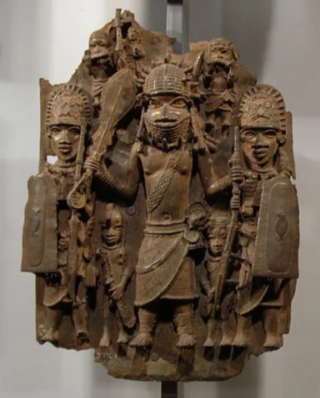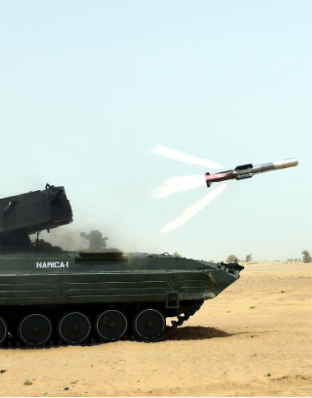Daily Current Affairs | March 28 2025
Important Topics from Current Affairs : 1) National Technical Textile Mission 2) Reviving Vikramshila University 3) Heritage Repatriation Fund 4) Cooperative Ride-Hailing Service 5) Nag Missile System (NAMIS)
Jumbo IAS
3/28/20254 min read
1) National Technical Textile Mission
National Technical Textiles Mission (NTTM) launched in 2020 by the Ministry of Textiles to boost technical textiles in India, has completed 5 years.
Technical Textiles - Fabrics made for specific functions and performance, rather than for looks. Used in products that help protect people, improve machinery, and solve practical problems, such as in car parts, building materials, medical equipment, and safety gear.


About NTTM
Launched for a period from 2020-21 to 2025-26 with an outlay of Rs.1,480 crores, by Ministry of Textiles.
It has 4 key components - Research, Innovation & Development; Promotion & Market Development; Export Promotion; and Education, Training, and Skill Development.
A total of 168 research projects, valued at around ₹509 crore, have been approved under it.
Benefits of Technical Textiles
Employment Generator: Expected to train and employ over 50,000 professionals in niche textile applications.
Export Booster: Dedicated export promotion council to tap new markets and meet global demand.
Startup Innovation: Schemes like GREAT support early-stage innovations with up to ₹50 lakh funding.
Support for Make in India: Strong thrust on local innovation and manufacturing, aligned with Aatmanirbhar Bharat.
Diverse Industrial Application: Used in automotive, construction, defence, agriculture, and healthcare sectors for enhanced functionality.
Performance of Indian Textile Sector
India is the 6th largest exporter of textiles globally, with a 3.9% share in world textile exports.
It contributes nearly 2% to the country’s GDP.
The sector is set to grow to US$350 billion by 2030 further strengthening India’s position in the global market.
This growth is expected to create 3.5 crore jobs.
Other Steps for Technical Textiles
Grant for Internship Support for Technical Textiles (GIST 2.0) : To bridge the gap between industry and academia by offering hands-on learning opportunities in technical textiles.
Grant for Research & Entrepreneurship across Aspiring Innovators in Technical Textiles (GREAT) Scheme: The program provides funding to help translate prototypes into technologies and products for commercialisation.
Technotex 2024: Held as part of Bharat Tex 2024, showcased the strength of India’s technical textiles sector, offering a platform to explore global investment opportunities.
2) Reviving Vikramshila University
A decade after Nalanda University came up in the foothills of Rajgir, work is on to revive another ancient centre of learning in Bihar — Vikramshila.
The Bihar Govt has recently identified 202.14 acres at Antichak village in Bhagalpur district for the Central University.


Historical Significance
Founded by King Dharmapala of the Pala dynasty in the late 8th or early 9th century CE, it was an ancient Buddhist monastery and leading centre of learning.
It specialised in Buddhist Tantra, philosophy, grammar, metaphysics, logic, and occult studies.
Renowned as a prominent centre of Vajrayana Buddhism, employing eminent Tantric teachers such as Buddhajñānapāda, Dīpaṁkarabhadra, and Jayabhadra.
Architectural & Cultural Significance
Vikramashila ranks among India’s most distinguished Buddhist mahaviharas, alongside Nalanda and Odantapuri (Bihar).
Features a central cruciform stupa surrounded by 208 cells (52 cells on each side) for monks.
Hosted an advanced library with a cooling system designed for manuscript preservation.
At its height during King Chanaka’s reign (955–983 CE), Vikramashila gained prominence for its structured hierarchy.
3) Heritage Repatriation Fund
The Department-related Parliamentary Standing Committee(PSC) on Transport, Tourism and Culture stated that the government could establish a ‘Heritage Repatriation Fund’ for recovering stolen and smuggled antiquities from India.
The fund will support legal challenges, negotiate purchases and fund transportation and conservation of returned artefacts.
It shall accept contributions from corporations, wealthy individuals, and the Indian diaspora.


Stolen Antiquities from India
Since 2014, the Centre has brought 642 antiquities from various countries such as Australia, France, and the United Kingdom.
Majority of them have come from USA.
Between 2020 and 2024, a total 610 cultural objects including precious idols and sculptures were returned.
The Government signed a Cultural Property Agreement (CPA) with the USA to prevent smuggling of Indian antiquities.
Other Recommendations by PSC
Heritage Recovery Task Force - A dedicated multidisciplinary team comprising diplomats, legal experts, and art historians to identify and recover artefacts worldwide.
International Cooperation - More Cultural Property Agreements (CPAs) to prevent illicit trafficking, similar to recent agreements with the USA.
Use of Technology - Use advanced imaging, DNA testing, and AI databases to authenticate and establish the provenance of artifacts.
4) Cooperative Ride-Hailing Service
The government has announced the upcoming launch of ‘Sahkar Taxi’, a cooperative-based ride-hailing service aimed at directly benefiting drivers.
Sahkar Taxi is a government-backed cooperative ride-hailing platform where drivers retain full profits without intermediary commission cuts.
Inspired by app-based services like Ola and Uber, but driven by cooperative societies.


Benefits
Driver Ownership - Ola and Uber have been criticised for high commissions. Sahakar Taxi enables driver ownership through cooperative structures, enhancing income security.
Sahkar Se Samridhi - Promotes local economic participation, aligned with ‘Sahkar Se Samriddhi’ (Prosperity through Cooperation).
Inclusive Growth - Offers a sustainable & inclusive alternative to profit-driven aggregator platforms.
Transparency in Pricing.
5) Nag Missile System (NAMIS)
The government has signed deals worth Rs 2,500 crore to procure the Nag Missile System (NAMIS) tracked version of an anti-tank weapon and around 5,000 light vehicles for the armed forces.
NAMIS deal signed with Armoured Vehicle Nigam Limited.
5,000 light vehicles procured from Force Motors & Mahindra.
Deals align with Aatmanirbhar Bharat initiative and boost indigenisation.


About NAMIS
It is a third-generation, fire-and-forget anti-tank guided missile (ATGM) system designed for the Indian Army by DRDO.
It is the tracked version of Nag ATGM that locks onto targets using Imaging Infrared (IIR) Seeker.
Designed to destroy heavily armored enemy tanks, including those equipped with composite & reactive armour, with night-strike capability.
Mounted on NAMICA (Nag Missile Carrier) for greater mobility.
It’s helicopter version is HELINA.


